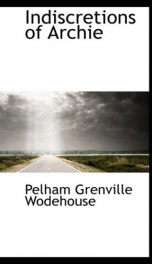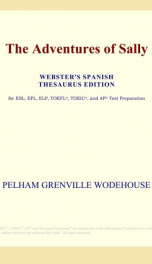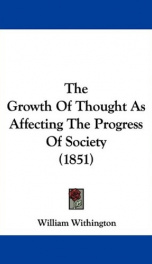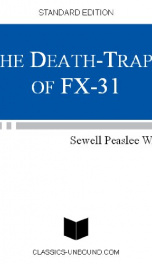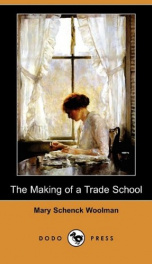Woolson Constance Fenimore

Constance Fenimore Woolson (March 5, 1840 – January 24, 1894) was an American novelist and short story writer. She was a grandniece of James Fenimore Cooper, and is best known for fictions about the Great Lakes region, the American South, and American expatriates in Europe. Woolson was born in Claremont, New Hampshire, but her family soon moved to Cleveland, Ohio, after the deaths of three of her sisters from scarlet fever. Woolson was educated at the Cleveland Female Seminary and a boarding school in New York. She traveled extensively through the midwestern and northeastern regions of the U.S. during her childhood and young adulthood. Woolson’s father died in 1869, and in the following year she began to publish fiction and essays in magazines such as The Atlantic Monthly and Harper's Magazine. Her first full-length publication was a children’s book, The Old Stone House (1873), and in 1875 she published her first volume of short stories, Castle Nowhere: Lake-Country Sketches, based on her experiences in the Great Lakes region, especially Mackinac Island. From 1873 to 1879 Woolson wintered with her mother in St. Augustine, Florida. During these winter visits she traveled widely in the South, which gave her material for her next collection of short stories, Rodman the Keeper: Southern Sketches (1880). After her mother’s death in 1879 she went to Europe, staying at a succession of hotels in England, France, Italy, Switzerland and Germany. In 1880 she met Henry James, and the relationship between the two writers has prompted much speculation by biographers, especially Lyndall Gordon in her 1998 book, A Private Life of Henry James. Woolson’s most famous story, Miss Grief, has been read as a fictionalization of their friendship, though she had not yet met James when she wrote it. Recent novels such as Emma Tennant's Felony (2002), David Lodge's Author, Author (2004) and Colm Toibin's The Master (2004) have treated the still unclear relationship between Woolson and James[1]. Woolson published her first novel Anne in 1880, followed by three others: East Angels (1886), Jupiter Lights (1889) and Horace Chase (1894). In 1883 she published the novella For the Major, a story of the postwar South that has become one of her most respected fictions. In the winter of 1889–1890 she traveled to Egypt and Greece, which resulted in a collection of travel sketches, Mentone, Cairo and Corfu (published posthumously in 1896). In 1893 Woolson rented an elegant apartment on the Grand Canal of Venice. Suffering from influenza and depression, she either jumped or fell to her death from a window in the apartment in January 1894. Two volumes of her short stories appeared after her death: The Front Yard and Other Italian Stories (1895) and Dorothy and Other Italian Stories (1896). She is buried in the Protestant Cemetery in Rome. Woolson’s short stories are regarded today as competent and readable examples of local color. Her novels have suffered somewhat in comparison, though they also reflect her ability to paint impressive backgrounds for her fiction. Her story "Jeannette" is a fine example of her first period of Great Lakes fiction, with an ending that plays against conventional romance. "Rodman the Keeper" represents her second period of Southern-based fiction, and shows sympathy for both Northern and Southern cultures and worldviews. "In Sloane Street", from Woolson’s final European period, shows genuine insight into the problems of an unmarried woman writer who is staying with a married couple.
do you like this author?
What readers are saying
What do you think? Write your own comment on this book!
write a commentWhat readers are saying
What do you think? Write your own comment on this author!
write a commentBook list

The Old Stone House
Series:
Unknown
Year:
Unknown
Raiting:
1.5/5
Aunt Faith sat alone on the piazza and sad thoughts crowded into her heart. It was her birthday -the first day of June -and she could look back over more than half a century with that mournful retrospect which birthdays are apt to bring. Aunt Faith had seen trouble and had met affliction face to face.
Show more
add to favoritesadd In favorites
What readers are saying
What do you think? Write your own comment on this author!
write a commentGenre
- Reference / Business Skills / Shorthand
- Religion & Spirituality / Christianity / Literature & Fiction / Fiction
- Books / Short stories, English
- Business & Investing / Economics / Macroeconomics
- Literature & Fiction / Short Stories / General
- Books / Abolitionists / Illinois / Alton / Biography
- Books / Mineralogy
if you like Woolson Constance Fenimore try:
readers also enjoyed
What readers are saying
What do you think? Write your own comment on this author!
write a commentGenre
- Reference / Business Skills / Shorthand
- Religion & Spirituality / Christianity / Literature & Fiction / Fiction
- Books / Short stories, English
- Business & Investing / Economics / Macroeconomics
- Literature & Fiction / Short Stories / General
- Books / Abolitionists / Illinois / Alton / Biography
- Books / Mineralogy
if you like Woolson Constance Fenimore try:
readers also enjoyed
Do you want to exchange books? It’s EASY!
Get registered and find other users who want to give their favourite books to good hands!
